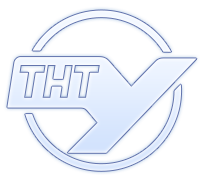|
|
|
Modeling of undeformed chip in power skiving gear cutting process
| Назва | Modeling of undeformed chip in power skiving gear cutting process |
| Назва англійською | Modeling of undeformed chip in power skiving gear cutting process |
| Автори | Slipchuk Andrii |
| Принадлежність | Institute of Mechanical Engineering and Transport, Lviv Polytechnical National University, Lviv, Ukraine |
| Бібліографічний опис | Modeling of undeformed chip in power skiving gear cutting process / Slipchuk Andrii // Scientific Journal of TNTU. — Tern.: TNTU, 2023. — Vol 111. — No 3. — P. 84–96. |
| Bibliographic description: | Slipchuk A. (2023) Modeling of undeformed chip in power skiving gear cutting process. Scientific Journal of TNTU (Tern.), vol 111, no 3, pp. 84–96. |
| DOI: | https://doi.org/10.33108/visnyk_tntu2023.03.084 |
| УДК |
622.24.051.55 |
| Ключові слова |
undeformed chip, Power skiving, graphoanalytical method, sliding fracture, chip cross-sectional area, cutter, legal path. |
|
The method of cutting gear wheel by the Power skiving method is considered and the principle of creating non-deformed chip when cutting external spur gear is analyzed in detail in this paper. The task of this investigation is to develop an adequate model of chip formation and to analyze quantitative estimates of parameters of slices in Power skiving process. In order to solve this problem, complex system of grapho-analytical, mathematical and computer modeling of this process is developed. It takes into account its kinematics and reliably reproduces the regularities of cutting-forming processes. The grapho-analytical method developed by I. E. Hrytsai for worm tooth milling is used to model the parameters of the sections. The continuous movement of cutting and forming is presented in the form of successive discrete movements of the contour of the tooth, and its linear and angular positions relative to the processed gear wheel are easily described mathematically. This greatly simplifies the model and geometric constructions using existing CAD systems, unlike other known methods. In each position of the tooth, its contour in the front surface is combined with the contours of the teeth, which performed cutting in the previous positions both along the axial feed and on the helical line. The main condition for the accurate determination of the parameters of the cuts is the establishment of the shape and dimensions of the surface, which is formed in the process of steady cutting in each cavity of the gear wheel between the treated surfaces of the teeth and the raw surface of the workpiece for 1 revolution of the cutter. To investigate the parameters of the slices, the schematic arrangement of the gear wheel and the cutter is depicted and the process is divided into discrete states. The results of modeling according to the above mentioned parameters are given in the form of graphic dependencies: chip cross-sectional area, thickness depending on different axial feeds of the cutter and for different modules of the gear wheel. The dependence of the change in the geometric characteristics of the undeformed chip on the position of the cutter is obtained. In further research, it is possible to establish a number of other physical quantities and their interdependence during gear cutting using the Power skiving method. |
| ISSN: | 2522-4433 |
| Перелік літератури |
-
Ren Z., Fang Z., Arakane T., Kizaki, T., Nishikawa, T., Feng, Y., ... & Sugita, N. (2021). Parametric modeling of uncut chip geometry for predicting crater wear in gear skiving. Journal of Materials Processing Technology, 290, 116973.
-
https://www.youtube.com/watch?v=ks3Fb2qiqJg&ab_channel=SecoTools
-
Ren, Z., Fang, Z., Kobayashi, G., Kizaki, T., Sugita, N., Nishikawa, T., ... & Nabata, E. (2020). Influence of tool eccentricity on surface roughness in gear skiving. Precision Engineering, 63, 170-176.
-
Vargas, B., Zapf, M., Klose, J., Zanger, F., & Schulze, V. (2019). Numerical modelling of cutting forces in gear skiving. Procedia CIRP, 82, 455-460.
-
Onozuka, H., Tayama, F., Huang, Y., & Inui, M. (2020). Cutting force model for power skiving of internal gear. Journal of Manufacturing Processes, 56, 1277-1285.
-
Inui, M., Huang, Y., Onozuka, H., & Umezu, N. (2020). Geometric simulation of power skiving of internal gear using solid model with triple-dexel representation. Procedia Manufacturing, 48, 520-527.
-
McCloskey, P., Katz, A., Berglind, L., Erkorkmaz, K., Ozturk, E., & Ismail, F. (2019). Chip geometry and cutting forces in gear power skiving. CIRP Annals, 68(1), 109-112.
-
Bergs, T., Georgoussis, A., & Löpenhaus, C. (2020). Development of a numerical simulation method for gear skiving. Procedia CIRP, 88, 352-357.
-
Klocke, F., Brecher, C., Löpenhaus, C., Ganser, P., Staudt, J., & Krömer, M. (2016). Technological and simulative analysis of power skiving. Procedia Cirp, 50, 773-778.
-
Spath, D., & Hühsam, A. (2002). Skiving for high-performance machining of periodic structures. CIRP Annals, 51(1), 91-94.
-
Bouzakis, K. D., Friderikos, O., & Tsiafis, I. (2007). FEM-SUPPORTED SIMULATION OF CHIP FORMATION AND FLOW IN GEAR HOBBING OF HELICAL GEARS.
-
Brecher, C., Brumm, M., & Krömer, M. (2015). Design of gear hobbing processes using simulations and empirical data. Procedia CIRP, 33, 484-489.
-
Bouzakis, K. D., Lili, E., Michailidis, N., & Friderikos, O. (2008). Manufacturing of cylindrical gears by generating cutting processes: A critical synthesis of analysis methods. CIRP annals, 57(2), 676-696.
-
Guo, E., Hong, R., Huang, X., & Fang, C. (2015). Research on the cutting mechanism of cylindrical gear power skiving. The International Journal of Advanced Manufacturing Technology, 79(1), 541-550.
-
Guo, E., Hong, R., Huang, X., & Fang, C. (2016). A novel power skiving method using the common shaper cutter. The International Journal of Advanced Manufacturing Technology, 83(1), 157-165.
-
Guo, E., Hong, R., Huang, X., & Fang, C. (2014). Research on the design of skiving tool for machining involute gears. Journal of Mechanical Science and Technology, 28(12), 5107-5115.
-
Hühsam, A. (2002). Modellbildung und experimentelle Untersuchung des Wälzschälprozesses. Inst. für Werkzeugmaschinen und Betriebstechnik. Universität Karlsruhe. 2002
-
Bechle, A. (2006). Beitrag zur prozesssicheren Bearbeitung beim Hochleistungsfertigungsverfahren Wälzschälen. Shaker.. Aachen, 2006.
-
Klocke, F., Brecher, C., Löpenhaus, C., Ganser, P., Staudt, J., & Krömer, M. (2016). Technological and simulative analysis of power skiving. Procedia Cirp, 50, 773-778. https://doi.org/10.1016/j.procir.2016.05.052
-
Tapoglou, N. (2019). Calculation of non-deformed chip and gear geometry in power skiving using a CAD-based simulation. The International Journal of Advanced Manufacturing Technology, 100(5), 1779-1785. orcid.org/0000-0001-9126-5407
-
https://mav.industrie.de/werkzeuge/horn-waelzschaelen-von-verzahnungen-power-skiving/#slider-intro-2
-
Hrytsay I.YE. Teoretyko-prykladni osnovy kompleksnykh naukovykh doslidzhenʹ protsesu narizannya zubchastykh kolis. Lʹviv; Spolom, 2009. – 254 p. [in Ukrainian].
|
| References: |
-
Ren Z., Fang Z., Arakane T., Kizaki, T., Nishikawa, T., Feng, Y., ... & Sugita, N. (2021). Parametric modeling of uncut chip geometry for predicting crater wear in gear skiving. Journal of Materials Processing Technology, 290, 116973.
-
https://www.youtube.com/watch?v=ks3Fb2qiqJg&ab_channel=SecoTools
-
Ren, Z., Fang, Z., Kobayashi, G., Kizaki, T., Sugita, N., Nishikawa, T., ... & Nabata, E. (2020). Influence of tool eccentricity on surface roughness in gear skiving. Precision Engineering, 63, 170-176.
-
Vargas, B., Zapf, M., Klose, J., Zanger, F., & Schulze, V. (2019). Numerical modelling of cutting forces in gear skiving. Procedia CIRP, 82, 455-460.
-
Onozuka, H., Tayama, F., Huang, Y., & Inui, M. (2020). Cutting force model for power skiving of internal gear. Journal of Manufacturing Processes, 56, 1277-1285.
-
Inui, M., Huang, Y., Onozuka, H., & Umezu, N. (2020). Geometric simulation of power skiving of internal gear using solid model with triple-dexel representation. Procedia Manufacturing, 48, 520-527.
-
McCloskey, P., Katz, A., Berglind, L., Erkorkmaz, K., Ozturk, E., & Ismail, F. (2019). Chip geometry and cutting forces in gear power skiving. CIRP Annals, 68(1), 109-112.
-
Bergs, T., Georgoussis, A., & Löpenhaus, C. (2020). Development of a numerical simulation method for gear skiving. Procedia CIRP, 88, 352-357.
-
Klocke, F., Brecher, C., Löpenhaus, C., Ganser, P., Staudt, J., & Krömer, M. (2016). Technological and simulative analysis of power skiving. Procedia Cirp, 50, 773-778.
-
Spath, D., & Hühsam, A. (2002). Skiving for high-performance machining of periodic structures. CIRP Annals, 51(1), 91-94.
-
Bouzakis, K. D., Friderikos, O., & Tsiafis, I. (2007). FEM-SUPPORTED SIMULATION OF CHIP FORMATION AND FLOW IN GEAR HOBBING OF HELICAL GEARS.
-
Brecher, C., Brumm, M., & Krömer, M. (2015). Design of gear hobbing processes using simulations and empirical data. Procedia CIRP, 33, 484-489.
-
Bouzakis, K. D., Lili, E., Michailidis, N., & Friderikos, O. (2008). Manufacturing of cylindrical gears by generating cutting processes: A critical synthesis of analysis methods. CIRP annals, 57(2), 676-696.
-
Guo, E., Hong, R., Huang, X., & Fang, C. (2015). Research on the cutting mechanism of cylindrical gear power skiving. The International Journal of Advanced Manufacturing Technology, 79(1), 541-550.
-
Guo, E., Hong, R., Huang, X., & Fang, C. (2016). A novel power skiving method using the common shaper cutter. The International Journal of Advanced Manufacturing Technology, 83(1), 157-165.
-
Guo, E., Hong, R., Huang, X., & Fang, C. (2014). Research on the design of skiving tool for machining involute gears. Journal of Mechanical Science and Technology, 28(12), 5107-5115.
-
Hühsam, A. (2002). Modellbildung und experimentelle Untersuchung des Wälzschälprozesses. Inst. für Werkzeugmaschinen und Betriebstechnik. Universität Karlsruhe. 2002
-
Bechle, A. (2006). Beitrag zur prozesssicheren Bearbeitung beim Hochleistungsfertigungsverfahren Wälzschälen. Shaker.. Aachen, 2006.
-
Klocke, F., Brecher, C., Löpenhaus, C., Ganser, P., Staudt, J., & Krömer, M. (2016). Technological and simulative analysis of power skiving. Procedia Cirp, 50, 773-778. https://doi.org/10.1016/j.procir.2016.05.052
-
Tapoglou, N. (2019). Calculation of non-deformed chip and gear geometry in power skiving using a CAD-based simulation. The International Journal of Advanced Manufacturing Technology, 100(5), 1779-1785. orcid.org/0000-0001-9126-5407
-
https://mav.industrie.de/werkzeuge/horn-waelzschaelen-von-verzahnungen-power-skiving/#slider-intro-2
-
Hrytsay I.YE. Teoretyko-prykladni osnovy kompleksnykh naukovykh doslidzhenʹ protsesu narizannya zubchastykh kolis. Lʹviv; Spolom, 2009. – 254 p. [in Ukrainian].
|
| Завантажити |  |
|




